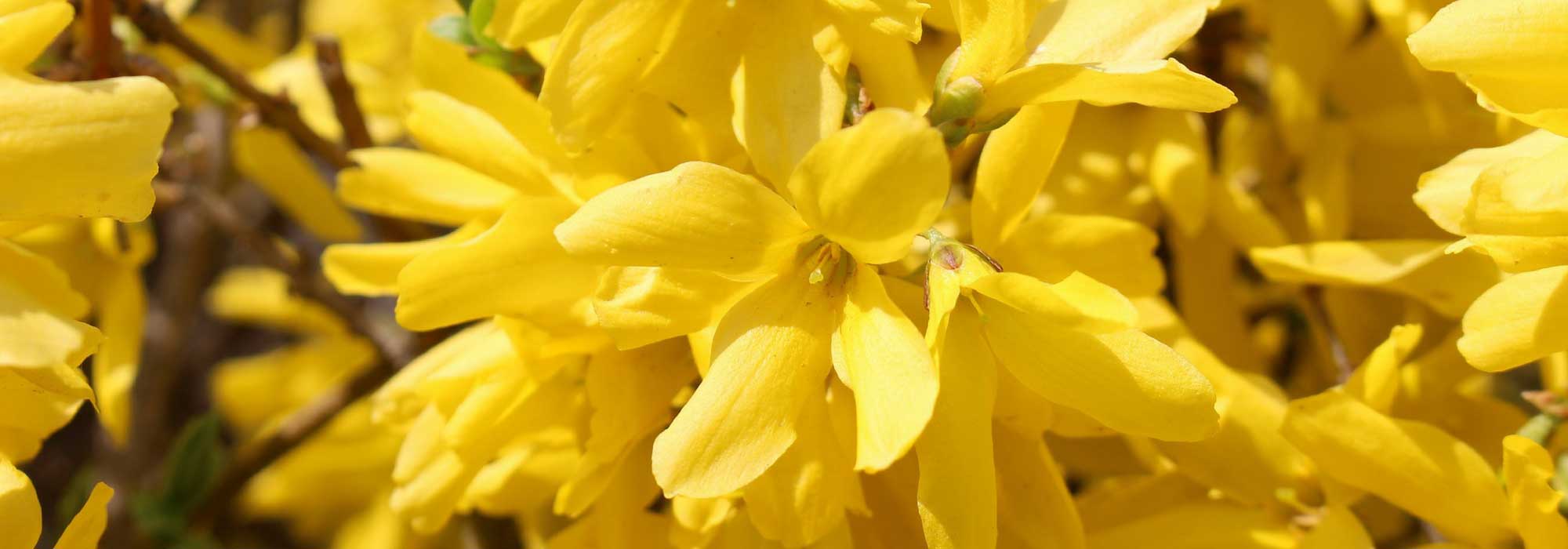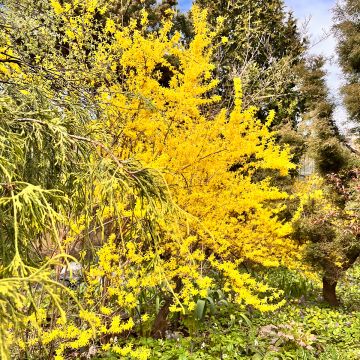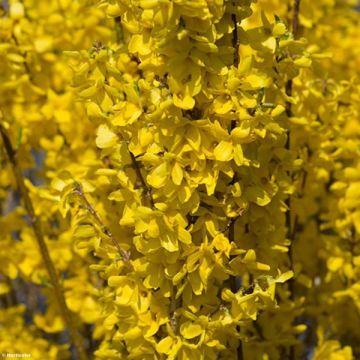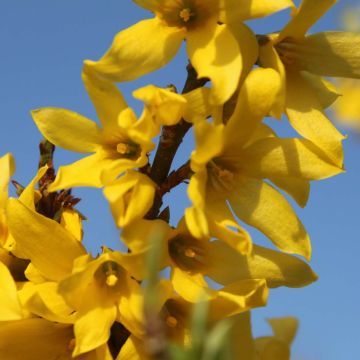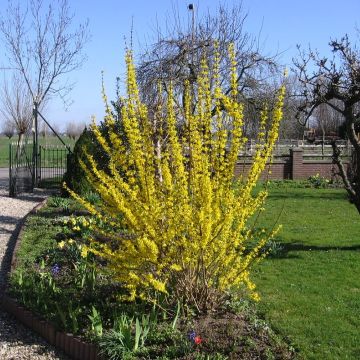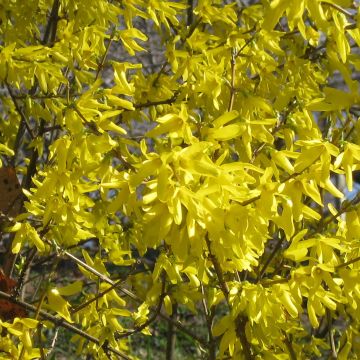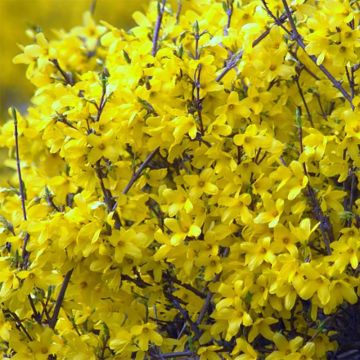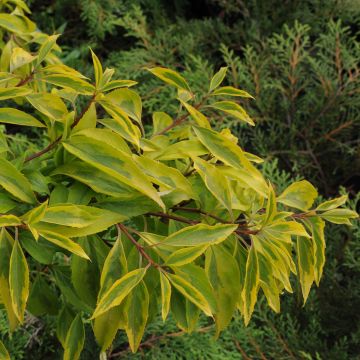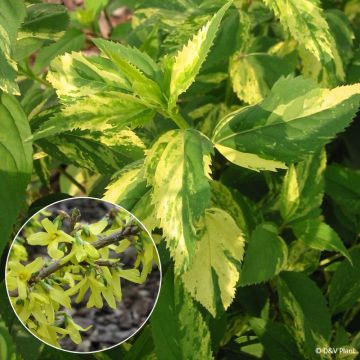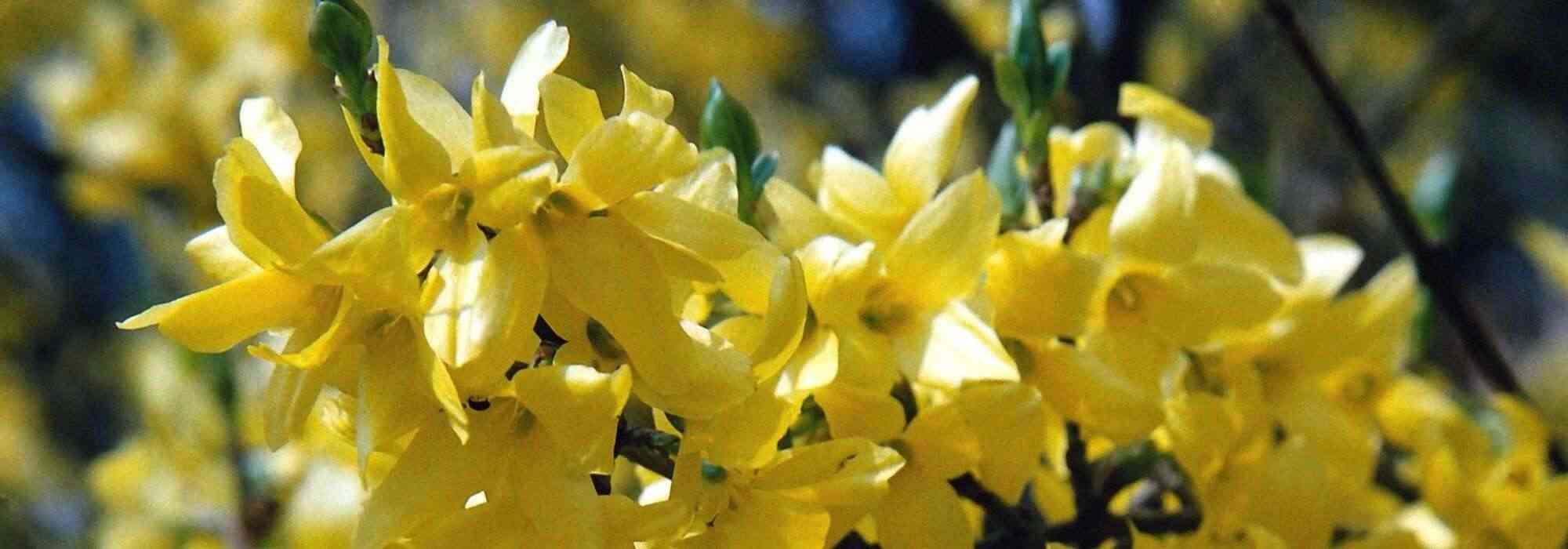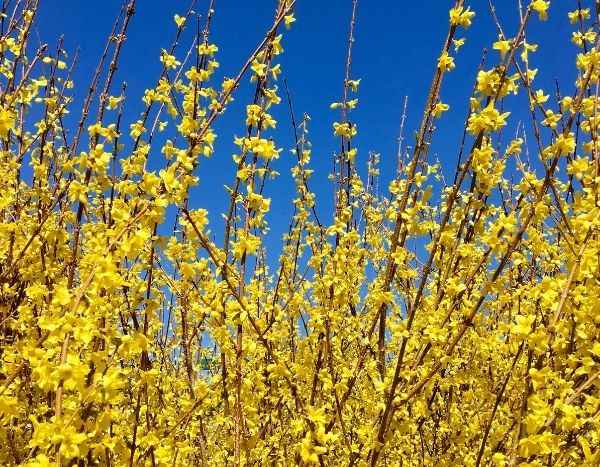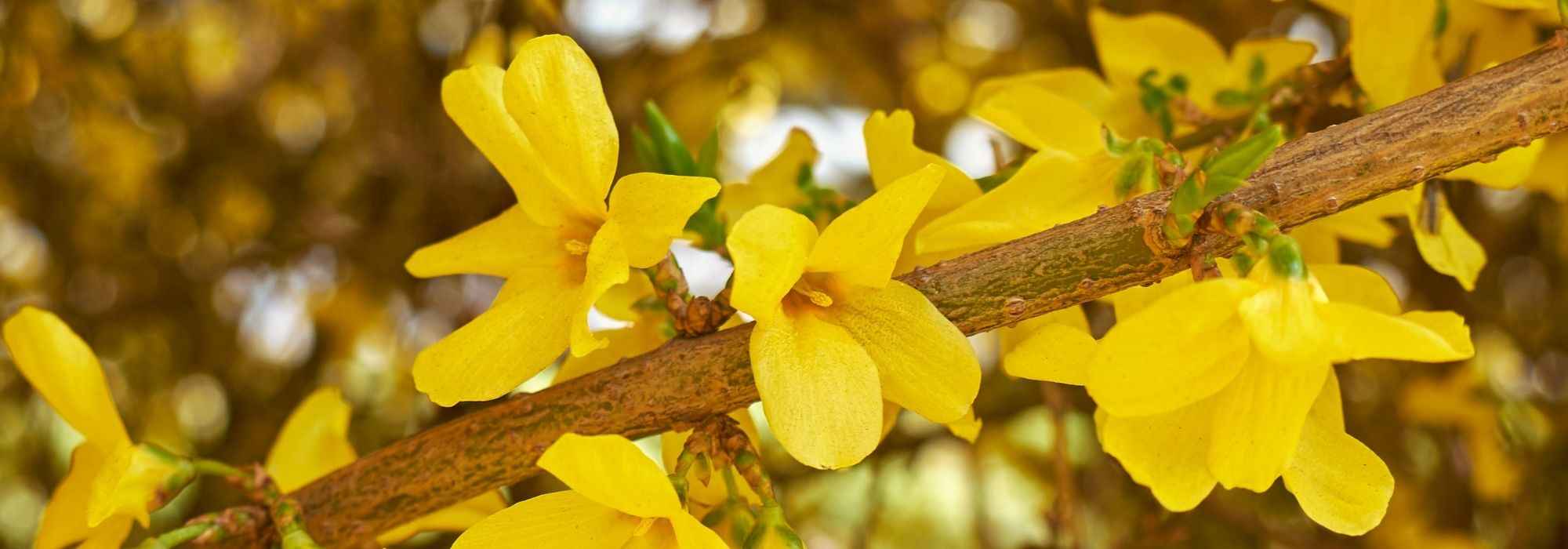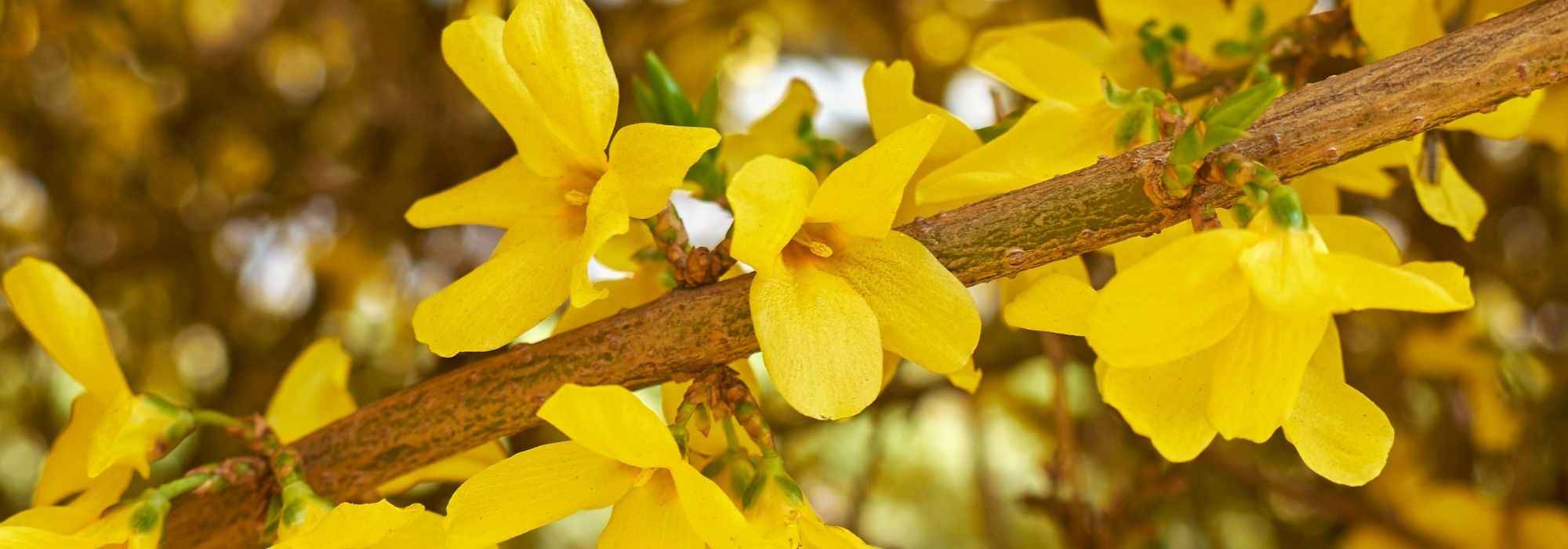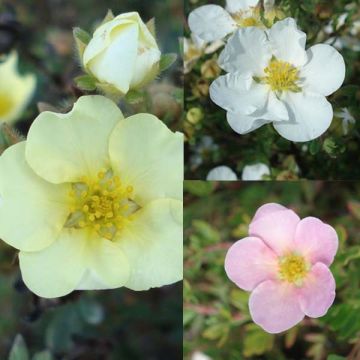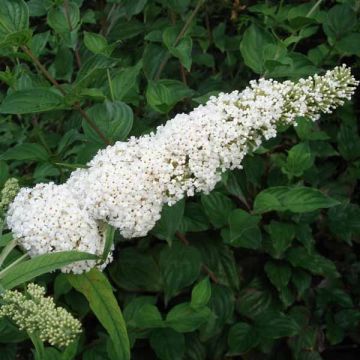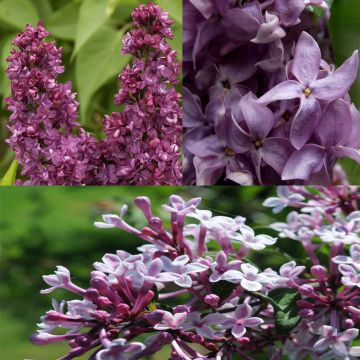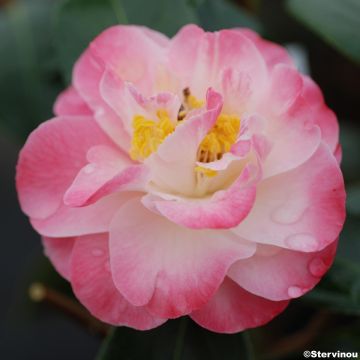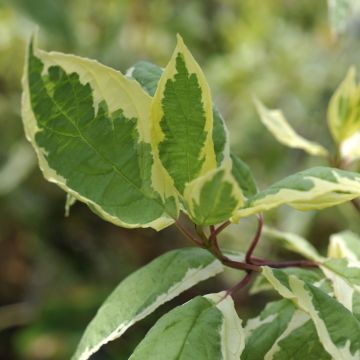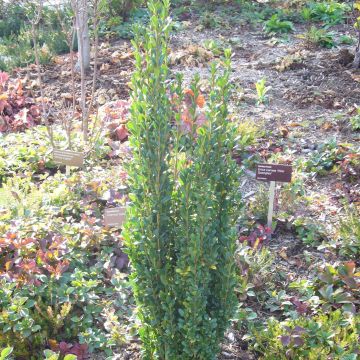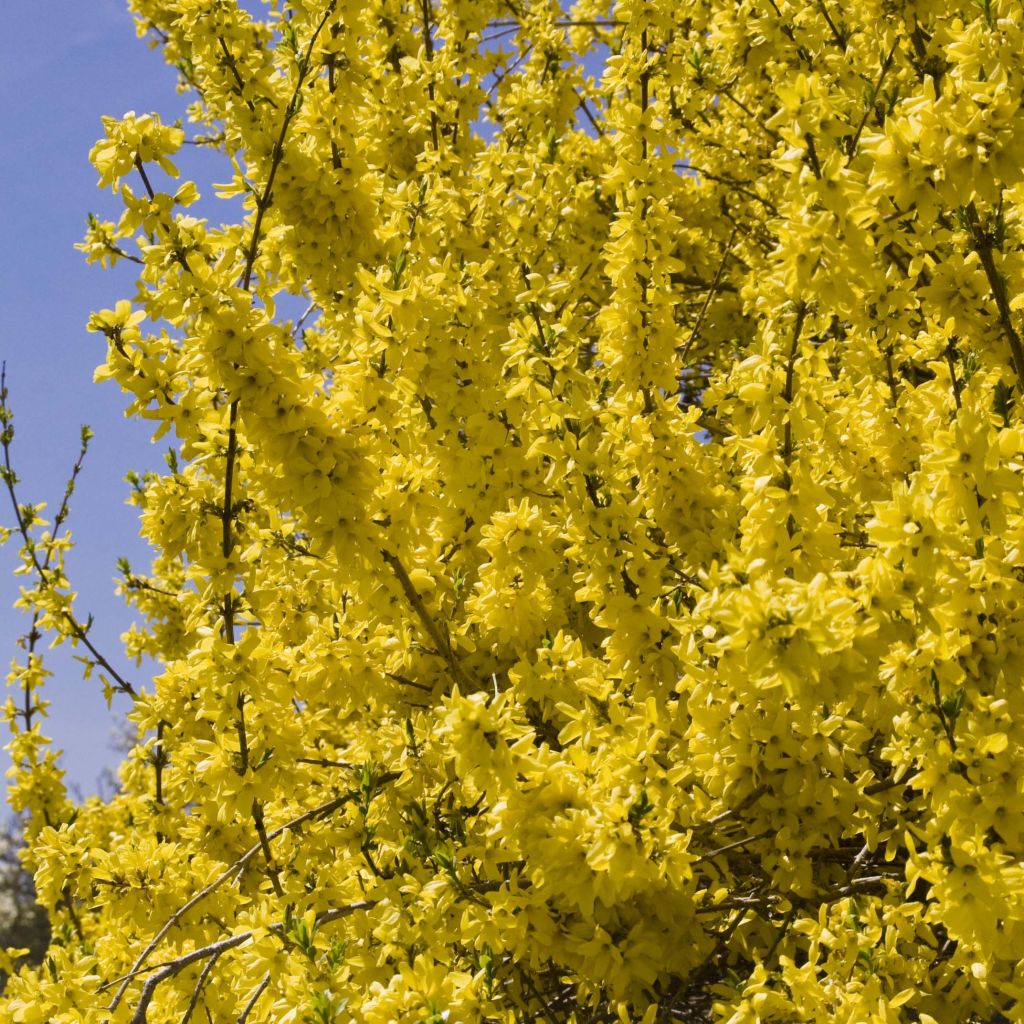

Forsythia intermedia Minigold
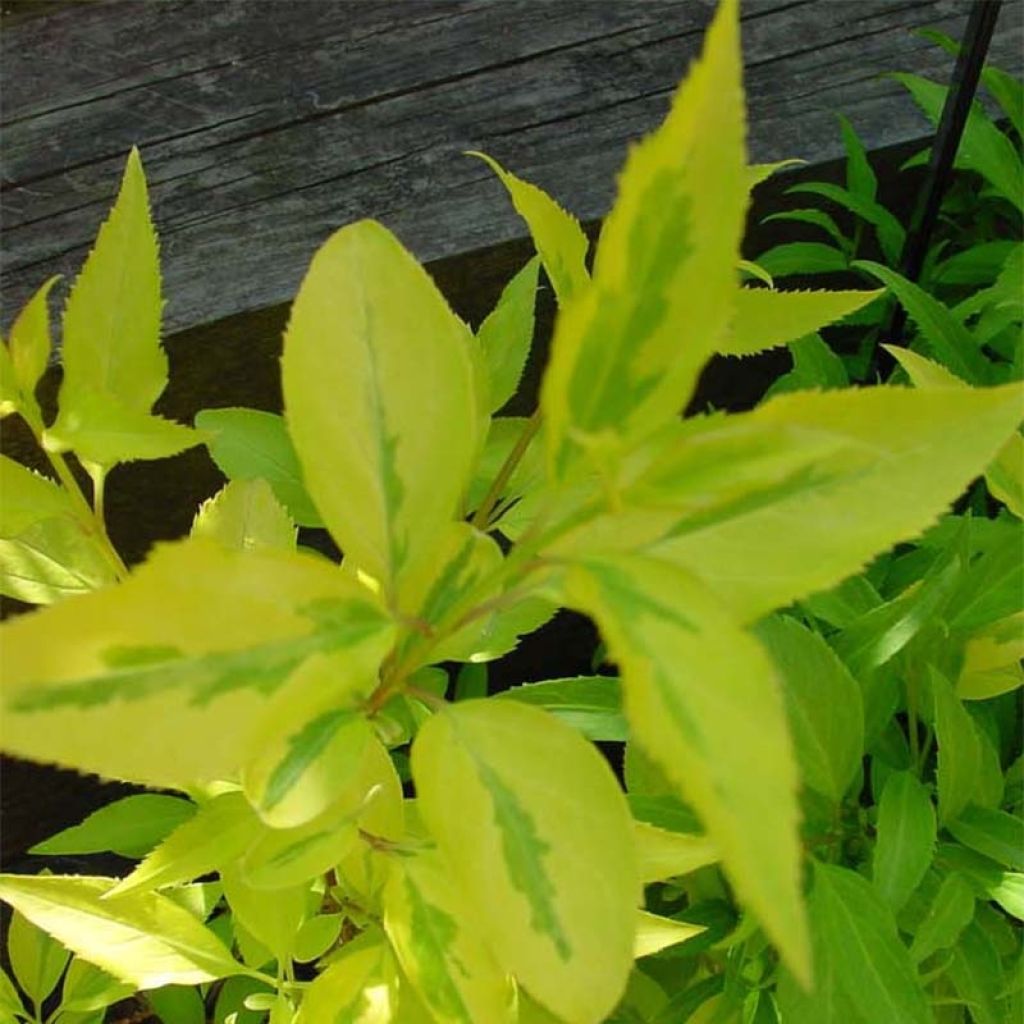

Forsythia intermedia Minigold
Forsythia intermedia Minigold
Forsythia x intermedia Minigold® (Flojor)
Planted in 2023, as of 2025 it has reached a height of 1.50m and a width of 1m. Beautiful flowering in March.
marc, 09/10/2025
Special offer!
Receive a €20 voucher for any order over €90 (excluding delivery costs, credit notes, and plastic-free options)!
1- Add your favorite plants to your cart.
2- Once you have reached €90, confirm your order (you can even choose the delivery date!).
3- As soon as your order is shipped, you will receive an email containing your voucher code, valid for 3 months (90 days).
Your voucher is unique and can only be used once, for any order with a minimum value of €20, excluding delivery costs.
Can be combined with other current offers, non-divisible and non-refundable.
Home or relay delivery (depending on size and destination)
Schedule delivery date,
and select date in basket
This plant carries a 24 months recovery warranty
More information
We guarantee the quality of our plants for a full growing cycle, and will replace at our expense any plant that fails to recover under normal climatic and planting conditions.

Would this plant suit my garden?
Set up your Plantfit profile →
Description
The Forsythia Minigold (Flojor) is a recent hybrid variety. An easy-to-grow plant that will undoubtedly find its place in all gardens, even the smallest ones. The shrub, low and compact, has a graceful habit with generous golden yellow flowering in early spring. Its foliage, singularly marbled and veined with pale yellow, appears after flowering, on reddish-brown branches. So many good reasons to adopt it without delay!
The Forsythia x intermedia Minigold is a charming small deciduous bush belonging to the oleaceae family. It descends from a hybrid from two species native to China, Forsythia suspensa and Forsythia viridissima. It will reach an average of 1m (3 ft 4 in) in all directions, showing a rounded dense bushy habit. Like other forsythias, it provides a true spring spectacle in March, literally covering its bare branches with many small bell-shaped flowers with bright golden yellow petals and stamens. The flowering is followed by the appearance of deciduous foliage. The leaves of this variety are of a rather unusual chartreuse green color when they first appear. They unfold into long pointed leaves measuring 8 to 10 cm (3.1 to 3.9 in) long, with very dentate edges. The lamina, a shiny dark green, is marbled and veined with tender green-yellow, especially in the center. The foliage sometimes takes on beautiful yellow to red-orange hues in autumn before falling.
The Forsythia Minigold is perfectly hardy and very easy to maintain, it grows in all types of soil and under most climates. This variety is ideal for small spaces such as rockeries, mass borders or small gardens. It also grows very well in pots, given its moderate size. It can be planted alone or in the company of Japanese quinces, Japanese spireas, compact Cotinus (Cotinus coggygria Lilla) or even with mahonias or mock oranges. It can be planted as a low, flowering hedge, as its branches are quite low. In early December, cut a branch or two and put them in a vase, they will bloom for Christmas.
Forsythia intermedia Minigold in pictures
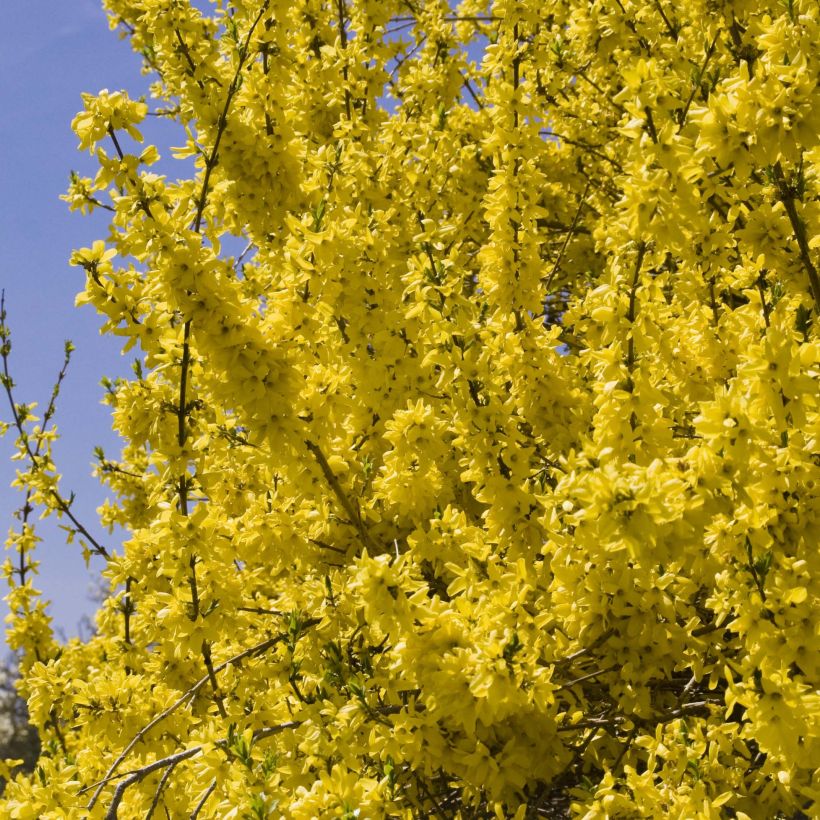

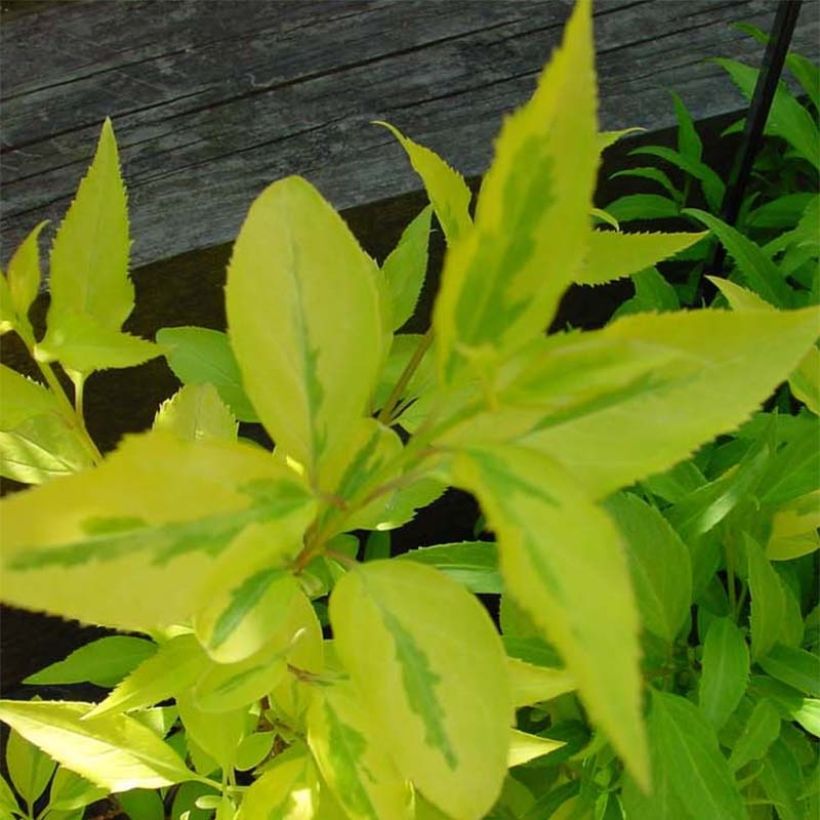

Plant habit
Flowering
Foliage
Botanical data
Forsythia
x intermedia
Minigold® (Flojor)
Oleaceae
Cultivar or hybrid
Other Forsythia
View all →Planting and care
The Forsythia intermedia Minigold appreciates a sunny exposure as well as partial shade. It can be planted in most soils, even clay or limestone. After flowering, remove half to two-thirds of the height of the flowering branches to rejuvenate the bush and ensure a quality flowering in the following spring. For the first three years, a simple cleaning of dead, thin or misplaced stems will suffice.
Planting period
Intended location
Care
Planting & care advice
-
, onOrder confirmed
Reply from on Promesse de fleurs
Similar products
Haven't found what you were looking for?
Hardiness is the lowest winter temperature a plant can endure without suffering serious damage or even dying. However, hardiness is affected by location (a sheltered area, such as a patio), protection (winter cover) and soil type (hardiness is improved by well-drained soil).

Photo Sharing Terms & Conditions
In order to encourage gardeners to interact and share their experiences, Promesse de fleurs offers various media enabling content to be uploaded onto its Site - in particular via the ‘Photo sharing’ module.
The User agrees to refrain from:
- Posting any content that is illegal, prejudicial, insulting, racist, inciteful to hatred, revisionist, contrary to public decency, that infringes on privacy or on the privacy rights of third parties, in particular the publicity rights of persons and goods, intellectual property rights, or the right to privacy.
- Submitting content on behalf of a third party;
- Impersonate the identity of a third party and/or publish any personal information about a third party;
In general, the User undertakes to refrain from any unethical behaviour.
All Content (in particular text, comments, files, images, photos, videos, creative works, etc.), which may be subject to property or intellectual property rights, image or other private rights, shall remain the property of the User, subject to the limited rights granted by the terms of the licence granted by Promesse de fleurs as stated below. Users are at liberty to publish or not to publish such Content on the Site, notably via the ‘Photo Sharing’ facility, and accept that this Content shall be made public and freely accessible, notably on the Internet.
Users further acknowledge, undertake to have ,and guarantee that they hold all necessary rights and permissions to publish such material on the Site, in particular with regard to the legislation in force pertaining to any privacy, property, intellectual property, image, or contractual rights, or rights of any other nature. By publishing such Content on the Site, Users acknowledge accepting full liability as publishers of the Content within the meaning of the law, and grant Promesse de fleurs, free of charge, an inclusive, worldwide licence for the said Content for the entire duration of its publication, including all reproduction, representation, up/downloading, displaying, performing, transmission, and storage rights.
Users also grant permission for their name to be linked to the Content and accept that this link may not always be made available.
By engaging in posting material, Users consent to their Content becoming automatically accessible on the Internet, in particular on other sites and/or blogs and/or web pages of the Promesse de fleurs site, including in particular social pages and the Promesse de fleurs catalogue.
Users may secure the removal of entrusted content free of charge by issuing a simple request via our contact form.
The flowering period indicated on our website applies to countries and regions located in USDA zone 8 (France, the United Kingdom, Ireland, the Netherlands, etc.)
It will vary according to where you live:
- In zones 9 to 10 (Italy, Spain, Greece, etc.), flowering will occur about 2 to 4 weeks earlier.
- In zones 6 to 7 (Germany, Poland, Slovenia, and lower mountainous regions), flowering will be delayed by 2 to 3 weeks.
- In zone 5 (Central Europe, Scandinavia), blooming will be delayed by 3 to 5 weeks.
In temperate climates, pruning of spring-flowering shrubs (forsythia, spireas, etc.) should be done just after flowering.
Pruning of summer-flowering shrubs (Indian Lilac, Perovskia, etc.) can be done in winter or spring.
In cold regions as well as with frost-sensitive plants, avoid pruning too early when severe frosts may still occur.
The planting period indicated on our website applies to countries and regions located in USDA zone 8 (France, United Kingdom, Ireland, Netherlands).
It will vary according to where you live:
- In Mediterranean zones (Marseille, Madrid, Milan, etc.), autumn and winter are the best planting periods.
- In continental zones (Strasbourg, Munich, Vienna, etc.), delay planting by 2 to 3 weeks in spring and bring it forward by 2 to 4 weeks in autumn.
- In mountainous regions (the Alps, Pyrenees, Carpathians, etc.), it is best to plant in late spring (May-June) or late summer (August-September).
The harvesting period indicated on our website applies to countries and regions in USDA zone 8 (France, England, Ireland, the Netherlands).
In colder areas (Scandinavia, Poland, Austria...) fruit and vegetable harvests are likely to be delayed by 3-4 weeks.
In warmer areas (Italy, Spain, Greece, etc.), harvesting will probably take place earlier, depending on weather conditions.
The sowing periods indicated on our website apply to countries and regions within USDA Zone 8 (France, UK, Ireland, Netherlands).
In colder areas (Scandinavia, Poland, Austria...), delay any outdoor sowing by 3-4 weeks, or sow under glass.
In warmer climes (Italy, Spain, Greece, etc.), bring outdoor sowing forward by a few weeks.






























